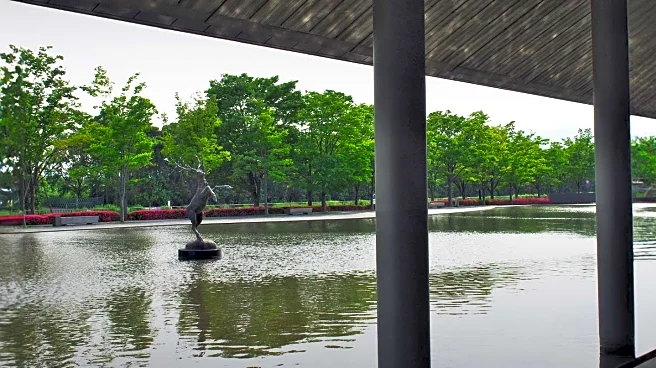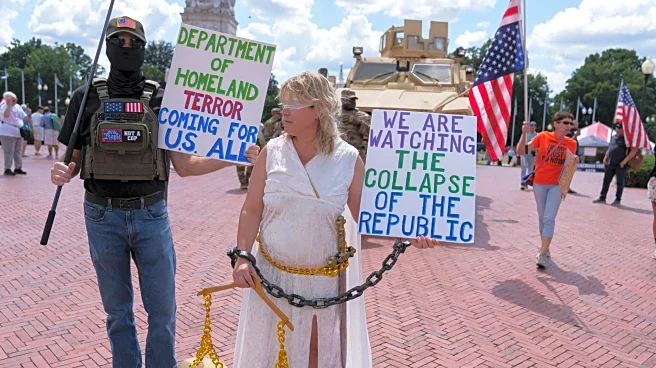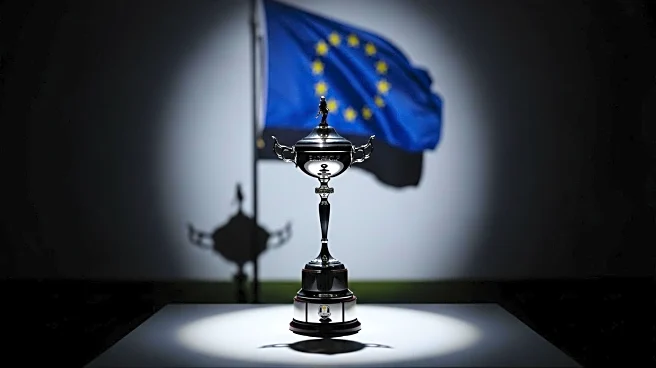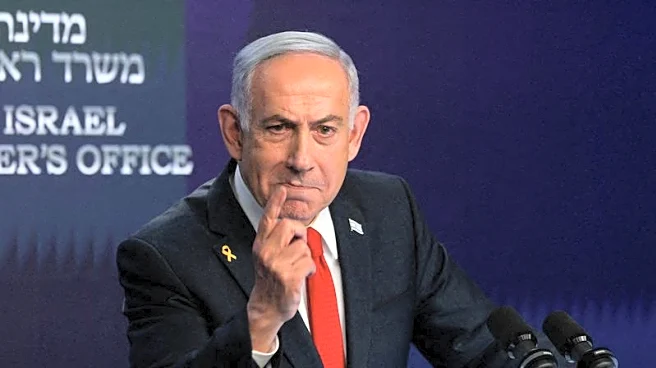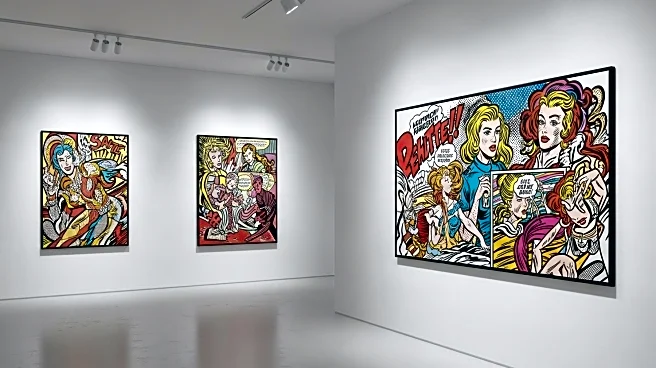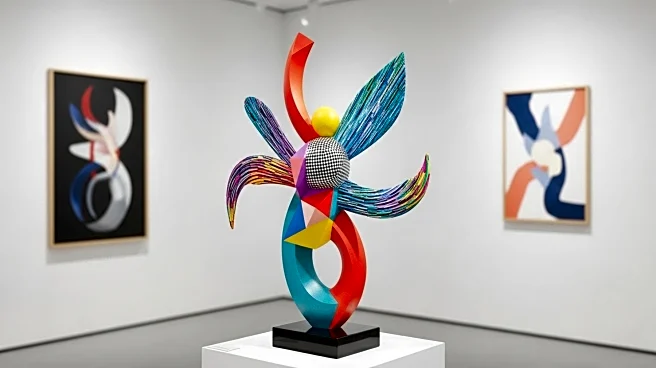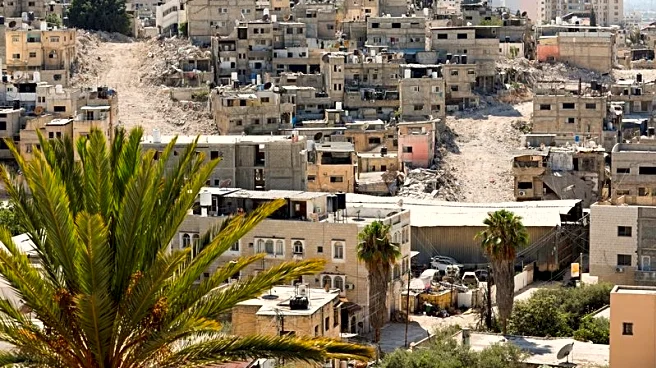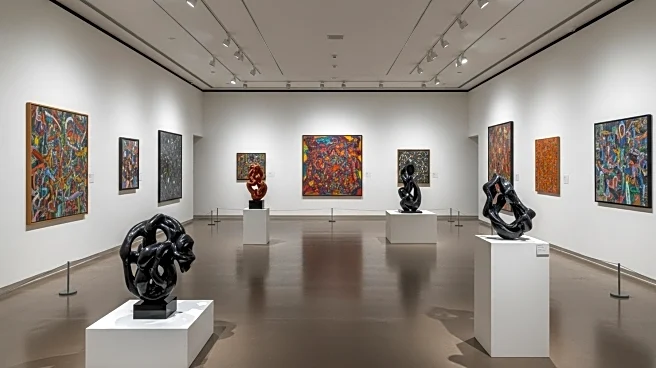What is the story about?
What's Happening?
Renowned Chinese artist Ai Weiwei is unveiling his latest public art installation, 'Camouflage,' at the Franklin D. Roosevelt Four Freedoms State Park on Roosevelt Island, New York. The installation, set to open on September 10, coincides with the United Nations General Assembly's 80th session. Ai Weiwei's work features fabric designed with cat silhouettes, reinterpreting traditional camouflage patterns. The installation covers the memorial to President Roosevelt, highlighting the Four Freedoms he championed: freedom of speech, freedom of religion, freedom from want, and freedom from fear. The project is part of the Art X Freedom initiative by the Four Freedoms Park Conservancy, aimed at inspiring dialogue on social justice issues. Ai Weiwei's installation seeks to provoke thought on the militarized nature of camouflage and its implications in a world marked by conflict.
Why It's Important?
Ai Weiwei's 'Camouflage' installation is significant as it merges art with social commentary, encouraging public discourse on themes of war, peace, and freedom. Situated near the United Nations, the installation underscores the global relevance of Roosevelt's Four Freedoms in contemporary society. By using camouflage—a symbol of concealment and protection—Ai Weiwei challenges viewers to consider what needs safeguarding and what truths require unveiling. The installation's timing with the UN General Assembly highlights the intersection of art and international diplomacy, potentially influencing discussions on global peace and security. Ai Weiwei's work continues to push boundaries, using art as a medium to address pressing societal issues, thereby reinforcing the role of public art in fostering critical conversations.
Beyond the Headlines
Ai Weiwei's choice of cat motifs in the 'Camouflage' installation adds a layer of symbolism, representing innocence and vulnerability in times of crisis. The inclusion of a single dog within the pattern invites viewers to reflect on diversity and coexistence, emphasizing the importance of accepting differences. The installation's interactive elements, such as ribbons for personal messages, engage the public in a participatory dialogue, enhancing the communal aspect of the artwork. Ai Weiwei's collaboration with For Freedoms further amplifies the installation's impact, connecting it to broader movements advocating for freedom and justice. The project exemplifies how art can serve as a catalyst for change, prompting individuals to reconsider their roles in addressing societal challenges.
AI Generated Content
Do you find this article useful?
